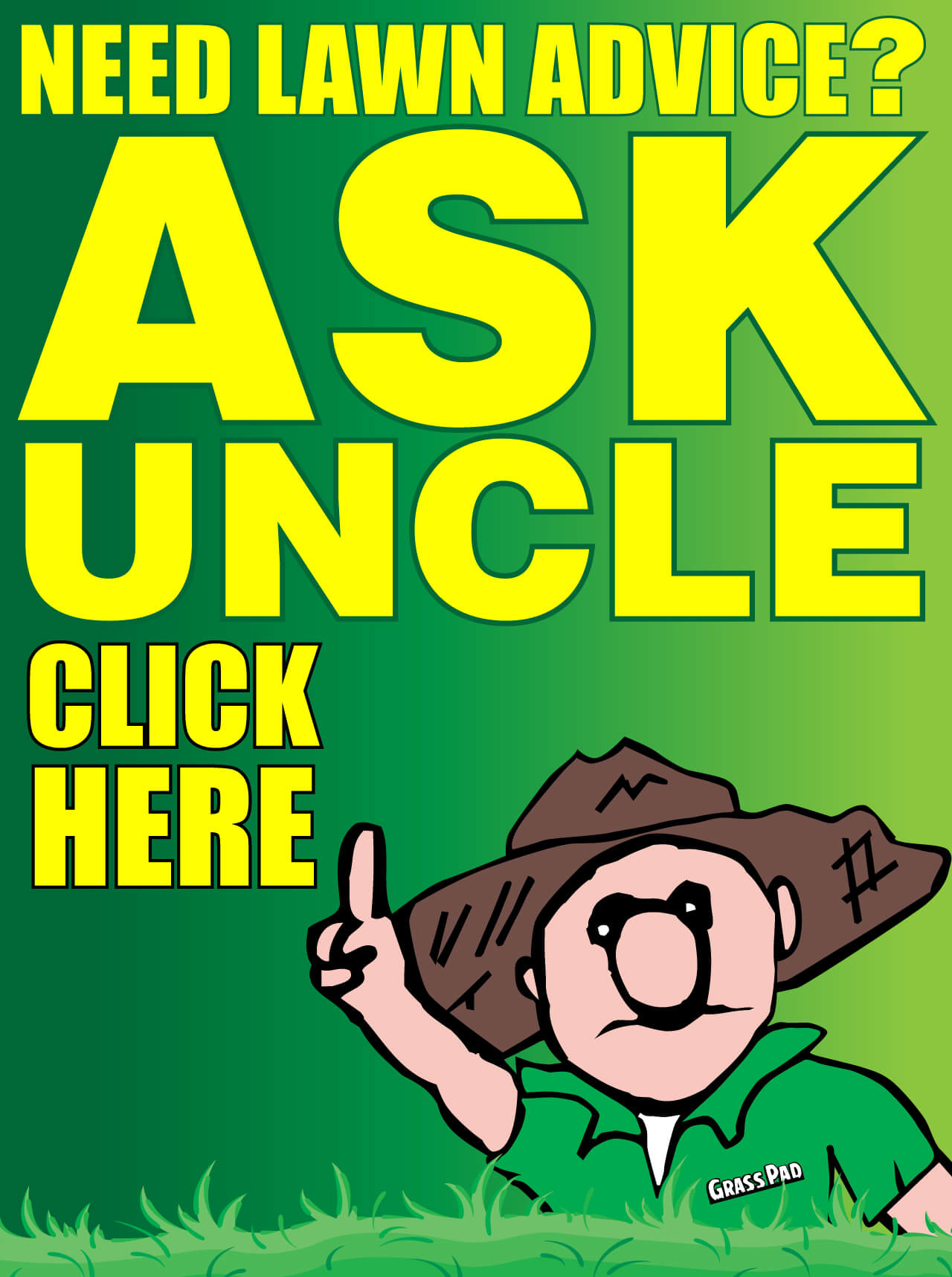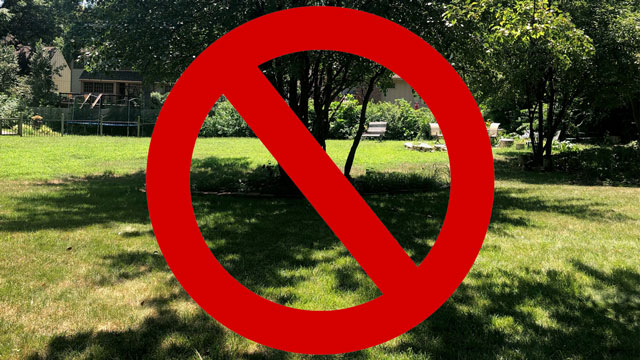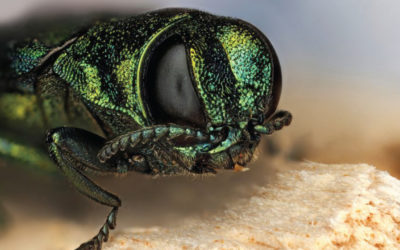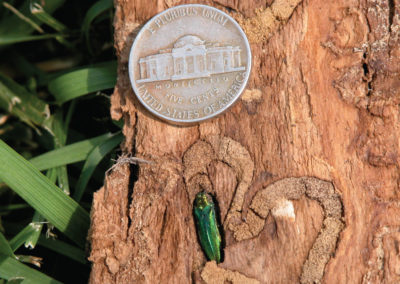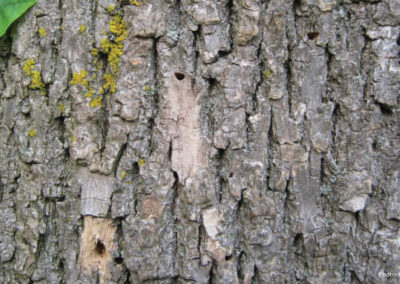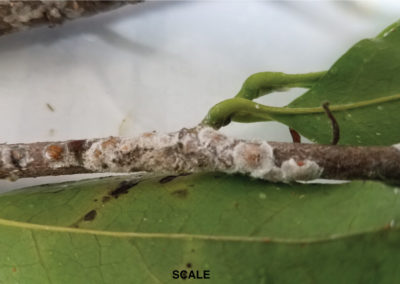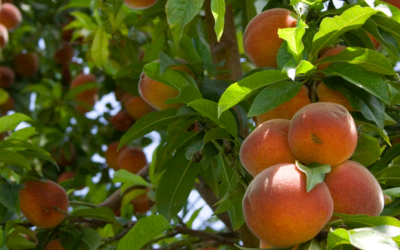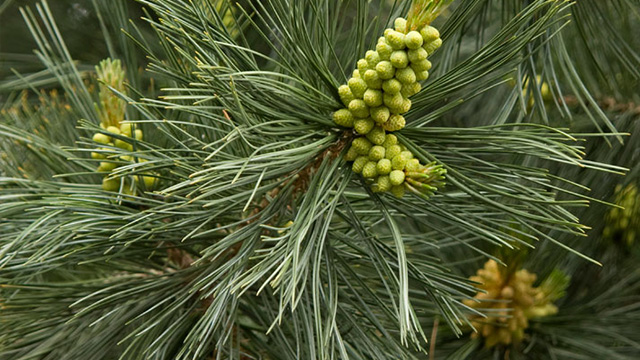Nursery
Flowering Lilacs for Spring Beauty
Where to Use Lilacs in the Landscape
Fragrant lilacs, valued for their appearance, are the most popular of spring-flowering shrubs. The vigorous growth habit of the lilacs makes it ideal for tall screen plantings, hedges, borders, and in mass plantings for their tremendous display of flowers. Lilacs will perform best in areas full to part sun. Place them near patio sitting areas, windows, and doorways just for the smell of it!
Best Lilacs for the Midwest
Few shrubs can rival lilacs for bloom even under challenging conditions. They are used as accent or specimen plants at the corners or along with houses and buildings. Most famous of the lilacs is the Dwarf Korean lilac, which rarely grows larger than 5 feet. This plant makes an attractive small hedge with its fragrant, purple-lilac flowers. Dwarf Korean lilac grafted on standards is ideal for focal points in the garden, leaving room under the canopy to use low mounding shrubs. Equally as hardy is the Crimson Doll™ lilac introduction from Garden Debut®. Ruby-red buds open in spring to fragrant reddish-pink flowers. Growing 3 to 5 feet tall and 4 to 6 feet wide, Crimson Doll™ will occasionally rebloom in summer.
Re-blooming Lilacs Bring Color Spring to Fall
New re-blooming varieties have been popular in the last few years. Bloomerang Dark Purple lilacs bloom twice. Dark Purple is bigger than the original Bloomerang and has more massive and rounded bloom clusters. They bloom in spring-like most lilacs, then re-blooming in mid-summer through fall.
Common and French Hybrid Lilacs
Old fashion purple and white lilacs along with the elegant colors of the French hybrid lilacs bring a majestic pallet of colors and height to any garden or structure.
Hardy in cold climates, a lilac requires full sun to flower well. Lilacs are easily grown and do well in either acid or alkaline soil but respond with improved growth to applications of lime every three or four years where soils are acid. Lilacs are known to have good deer resistance.
When to Prune Spring Flowering Lilacs
Prune a lilac right after it flowers in the spring. Pruning consists of removing old flower clusters and thinning out the oldest branches at ground level to encourage new growth from the base of the plant. The most vigorous new shoots should be left to take the place of the older stems, which will eventually be pruned away.
Renovating an Overgrown Lilac
Renew an older overgrown lilac by cutting the whole plant down to within six inches of the ground. It’s a drastic means of rejuvenation. But don’t worry, the plant will survive. The best way to treat old plants is to prune out one-third of the older stems each year for three consecutive years. In this way, the plant can maintain a reasonable height in the landscape and still flower from the remaining wood. By the time of the last pruning, replacement wood should be durable enough to support the plant and promote flowering
More Related Articles for Lilacs:
Uncle’s Root Accelerator – Keeping Plants Healthy
- Uncle’s Root Accelerator gives plants a healthy start. Learn More at this Link
Uncle’s Max Mix – The Secret is in the Soil
- Uncle’s Max Mix is a premium-grade horticultural planting mix. Learn More at this Link
Grass Pad Nursery Stock
- Search Idiot-Proof plant selections available at Grass Pad. Learn more at this link.
How to Fertilize for Healthy Trees and Shrubs
- Tips for fertilizing new and existing shrubs in landscapes. Learn more at this link.
Guide to Planting Trees and Shrubs
- How to plant trees and shrubs for best results. Learn more at this link.
Snowflake Pansies
Uncle’s Snowflake Pansy is for Color
There are perhaps no other flowers that meet the call of color quite like a pansy. There’s a full rainbow in pansy flowers: rich red, true orange, sunny yellow, soft mauve to deep purple, as well as black and white. Choose from clear colors, or the traditional blotched pansy. There are also mixes and multi-colored blooms. The most important rule of color when it comes to Uncle’s Snowflake Pansy? There are no rules!
Snowflake Pansies are for Fun
The modern-day pansy, a hybrid called viola x wittrockiana, can be traced back to 1839 England, but much has changed since then. Pansy got their name from the French word “pensée,” which means think. Contrary to English slang, the pansy is tough. They love cool weather, bounce back from light frosts, and in warmer climates thrive all winter. So have some fun with pansies and use them anywhere, in any color combinations. Plant them in unexpected containers or in little bare spots that need a lift. Plant pansies alone or with other cool-loving pals.
General Info
Ideal for: Garden beds, containers, hanging baskets and window boxes . Combines well with other plants for mixed container designs
Garden Height: 6 to 8 in Garden Spread: 6 to 8 in Exposure: Full to part sun
Pansy prefer cooler temperatures, but can take higher temperatures during the day as long as they have cooler night temperatures. In regions where night temperatures are below 68°F, pansy will bloom best when they get full sun all day. If night temperatures are above 68°F, choose an area that gets morning to mid-day sun, but is shaded during the afternoon, which is the hottest part of the day.
Spring Planting
Snowflake Pansy will bloom continuously through the summer if temperatures stay cool. If the weather is hot and plants do not bloom as vigorously, trim them back in late July or August to help refresh them for a second round of blooms in autumn.
Fall Planting
When planted in late summer or fall, a pansy will provide bright color until the first hard frost. Depending where you live (Zone 5+), Pansy flowers may bloom again the following spring.
How to Bring in a Sample
If you have a problem in your lawn or landscape, the Grass Pad has the knowledge and products to steer you in the right direction. Over the last 60 years, our staff has come across almost every lawn problem imaginable. In our experience, 99% of all the problem spots in turf fall into 1 of 4 categories.
- Drought – Rarely just a spot, but more likely a general browning of a large area. Early signs of drought stress can be detected by the turf color. Dry spots turn a noticeably darker shade of green eventually fading to a bluish gray. And, if you cannot push a screwdriver in the ground 6 inches without a hammer, lack of moisture is probably the cause.
- Fungus or turf disease – Most frequently shows up as patches where it transitions from perfect turf to brown grass over a short period, almost overnight, and continually expands. Occasionally lawn diseases can show up as general browning where it appears only 60 to 80% of grass turns brown. This look is similar to the appearance of drought stress. With no recent rain or irrigation, the screwdriver test will tell the difference. When you pull on the grass from diseased areas, the grass remains rooted, and it isn’t easy to pull out of the soil.
- Insect – Damage can come from grubs that eat the roots and live underground. When you tug on the brown spot, the grass comes up like a loose piece of carpet with soil attached to the bottom. Other insects that live on the soil’s surface can feed on the parts of the grass plant above ground. When you tug on this type of damaged turf, it comes up easily and has no soil attached, almost like grass clippings. Further investigation frequently reveals a caterpillar or maybe a tiny tunnel or hole with spider web looking material or caterpillar feces present.
- Spills – Something like gas, salt, pet urine, a misapplication of weed control, or fertilizer. Always check for loose gas caps and never fill the gas tank while the mower is on the grass. Move it to the driveway or sidewalk to refill.
Run through these scenarios, and you may be able to self-diagnosis your issues. These by no means identify all problems, but we find it gets most. If you suspect a disease, bring in samples of the browning grass in a sandwich bag. Try to get grass blades from the edge of the spot that is part green and part brown. Pictures took up close, and from a few steps away can also help. We like to be hands-on when it comes to diagnosing the problem. We get the questions every season, and sometimes, explaining the problem over the phone just isn’t the same as seeing it up close. Bringing the issue to us is easy and painless.
How to Take a Picture of Grass and Weeds
If you would like us to identify a specific type of grass or weed, a sample works best. If you can’t provide a sample, then an extreme closeup picture of the plant is the next best option. It’s very hard to identify a grass type or weed from a distance. However, if you need advice on what to do for your lawn, it’s best to take a wide-angled picture of the yard so we can see how thick the grass is, how much shade you have, and any other factors.
Bad Example of a Weed Photo
Good Example of a Weed Photo
How to Bring in a Grass Sample
If you are looking for us to help identify what kind of turfgrass you have, bring in a handful of freshly picked blades of the grass and we can tell you what it is and how to grow it. If you are buying new grass seed for overseeding and want to match your current lawn, it can be a good idea to bring a sample from several different areas of the lawn. Over time our yards can get reseeded with several types of grass and it’s good to know what grows well in different areas of the yard. A good method for bringing in a sample is to grab a handful of grass blades from each section of the yard and bring them in labeled plastic bags.
How to Bring in a Weed Sample
Pick the weed right out of the yard and bring it into one of our locations for us to look at. The weed needs to be green and growing – we can’t identify much from a dead plant. Try to bring the entire weed plant in if possible – roots, stem and leaves. We will try to identify it and get you the products and advice you need to be successful in killing the weed.
How to Bring in Samples of Turf Disease
Brown, yellow, gray or any other wacky colored spots in the yard? Turf disease can be a bit more difficult to identify unless we have both the healthy and the sick grass. Pick out some fresh grass blade samples from the middle of the diseased spots, and just around the outside of the spot to where the grass appears to be healthy. Having a sample of this transition zone from healthy to sick helps us identify what is going on with the grass. Bringing in a picture of the affected area can also help us identify if there’s something in the environment that may be causing the issue.
Bringing in Samples of Plants or Shrubs
The same method applies to items in your landscape. If you have a tree or shrub that has weird looking spots or holes on the leaves, snip part of the plant off and bring it into one of our stores. We like to see parts of the plant that have been affected as well as parts that still look healthy. That will help us get a better idea of what we see that’s going on. Also, putting the sample in a sealed plastic bag and keeping it cool will help preserve the sample, making identification much easier.
It’s good to get out in the yard and it’s even better when the yard is trouble free. Don’t be afraid to head on down to the Grass Pad to get the expert advice and quality products you need to continue to have the best-looking lawn in the neighborhood.
See Related: Fruit Tree Care
Control for Emerald Ash Borer
The past few years the two most talked about insects were the Japanese beetle and emerald ash borer. If you act now, this could be the year you get out ahead of these plundering pests and control aphids, scale and sawfly larvae at the same time.
What Are the Signs of Emerald Ash Borer?
Look for small D-shaped holes approximately 1/8 inch in diameter in the bark of the tree. Also, look for splitting in the bark revealing S-shaped grooves or trails under the bark.
How Can I protect Ash Trees from the Emerald Ash Borer?
Protect trees and shrubs before the beetles emerge by using a soil drench application of Dominion Tree & Shrub insecticide. A direct soil application of Dominion Tree & Shrub provides systemic insect control with up to twelve-month residual. Systemic controls are absorbed by the plant and are held within the plant tissue. When the borer or beetle chew the plant, they poison themselves.
When do I apply Dominion Tree & Shrub?
Start early and apply Dominion Tree & Shrub before Mother’s Day. Be careful to read and follow all label directions.
What Are Some of the Other Insects Controlled Using Dominion?
In addition to EAB, emerald ash borer and Japanese beetles, Dominion Tree & Shrub is an excellent control for aphids, birch borers, leafhoppers, leaf beetles, mealybugs, pine tip moth larvae, pine sawfly, scale, and whitefly.
How to Control Adult Japanese Beetles on My Trees, Shrubs and Roses?
Protect trees and shrubs after the Japanese beetles emerge. Apply Cyonara to the leaves every week to fight off beetles.
Uncle’s tip: Protect your lawn from Japanese beetle grub damage this fall with a July application of Long Lasting Grub Control.
Fruit Trees
Best Fruit Trees and Tips on Care
Apples, peaches and pears, oh my! Grass Pad offers only the best, easiest-to-grow fruit trees hardy for Kansas City. No matter how much growing room you have with standard, dwarf and semi-dwarf fruit trees. Grass Pad fruit trees are perfectly sized and come ready to plant. In no time at all, you’ll be harvesting sweet pie cherries, apples, peaches, plums and pears.
Note: Not all fruit tree varieties are available at all locations. Availability subject to market conditions.
Arkansas Black Apple
Dwf. Yellow Delicious Apple
Fireside Apple
Freedom Apple
Fuji Apple
Gala Apple
Golden Sentinel Columnar Apple
Granny Smith Apple
Haralred® Apple
Honeycrisp Apple
Honeygold Apple
Jonathan Apple
Liberty Apple
McIntosh Apple
Red Delicious Apple
Sweet Sixteen Apple
Winesap Apple
Yellow Delicious Apple
Semi Dwf. Gala Apple
Semi Dwf. Granny Smith Apple
Semi Dwf. Jonathan Apple
Semi Dwf. Red Delicious Apple
Semi Dwf. Sweet Sixteen Apple
Semi Dwf. Yellow Delicious Apple
Black Tartarian Cherry
Montmorency Cherry
Northstar Cherry
Sweet Cherry Pie Cherry
Belle of Georgia Peach
Early Elberta Peach
Elberta Peach
Frost Peach
Hale Haven Peach
Ranger Peach
Red Haven Peach
Redskin Peach
Sentinel Peach
Semi Dwf. Belle of Georgia Peach
Semi Dwf. Elberta Peach
Semi Dwf. J.H. Hale Peach
Semi Dwf. Ranger Peach
Bartlett Pear
Hosui Asian Pear
Keiffer Pear
Moonglow Pear
Orient Pear
Parker Pear
Shinsui Asian Pear
Summercrisp Pear
Semi Dwf Bartlett Pear
Santa Rosa Plum
Stanley Plum
Superior Plum
Toka Plum
More Related Articles for Fruit Trees:
Uncle’s Root Accelerator – Keeping Plants Healthy
- Uncle’s Root Accelerator gives plants a healthy start. Learn More at this Link
Uncle’s Max Mix – The Secret is in the Soil
- Uncle’s Max Mix is a premium-grade horticultural planting mix. Learn More at this Link
Grass Pad Nursery Stock
- Search Idiot-Proof plant selections available at Grass Pad. Learn more at this link.
How to Fertilize for Healthy Trees and Shrubs
- Tips for fertilizing new and existing shrubs in landscapes. Learn more at this link.
Guide to Planting Trees and Shrubs
- How to plant trees and shrubs for best results. Learn more at this link.
Winter Storm Damage
Will Winter Ever End?
This winter has been a little different when we compare it to the past three years. The winter of 2019 has been a record breaker with snow accumulation and sub-zero temperatures. Our backs aren’t the only thing that took a beating from the wet and heavy snow; so, did the landscapes around town, whether it be trees or shrubs.
The weight of heavy snow snapped branches and limbs all over town, and if it wasn’t snow, then it was the wind gusts that did the damage. Evergreen branches that didn’t break were bent and folded in different directions from storm and ice damage. Injury to branch tips and flower buds nipped by bitter arctic cold temperatures may not be discovered till spring.
Clean Up Winter Damage Now
The good news is that most of the trees and shrubs can be trimmed and pruned to prevent future long-term damage. Using proper trimming and pruning techniques to remove broken branches and removing torn or peeling bark will help in the recovery process. Splintered limbs and flayed bark left unattended create a gateway for insect and disease this spring. Doing the trimming and pruning in winter, while the trees and shrubs are dormant, result in less stress for the plant down the road.
Every landscape site and situation are different and unique in their own way. If you feel you can do the trimming and pruning yourself, here are some excellent pruning tips from the K-State Research and extension. If you think that your damage may be more than you can do yourself and in need of a professional, here’s a link to find a certified arborist in your area.
Healthy Trees Heal Quickly
Healthy trees and shrubs heal quickly and are more resistant to damaging insects and disease. As the ground thaws and the mercury rises, apply Uncle’s Garden and Plant Food around the base of the plant. Fertilizer tree spikes can also be used to aid and maintain your trees and shrubs health during the healing
Grass Pad Trees
Trees make our city beautiful and provide us with many benefits – shade, privacy, increased property values, shelter and food for birds and other small creatures to list just a few.
Trees contribute to the health of our planet earth. Trees clean the air by giving off oxygen, storing carbon, and recycling moisture into the atmosphere. Trees help prevent soil erosion, help modify temperatures, and act as windbreaks. In one year, an average tree inhales 26 pounds of CO2 and exhales enough oxygen for a family of four for a year.
Return on Investment. Benefits of trees have been known for a long time but it may be difficult to relate to the totality of all their advantages. With the help of a new computer program called i-Tree , you can now place a value on the benefits trees will pay back to you over time.
When is the best time to plant a tree? The answer is 20 years ago, but the next best time is now! Educate your kids and get them excited about picking out their own tree. Make it a family project. Plant a memorial tree for a loved one or on the birth of a child. Planting trees is not only a cool thing to do – it’s one way each of us can help improve our environment. Planting trees is easy and fun.
Come on down to the Grass Pad. Let our own “Green Team” help you find the perfect tree for any location and any budget. Instructions on care and planting are always available from our nursery experts. At Grass Pad we have everything for homeowners and professionals to be successful when planting trees and shrubs.







